Even before the world shakes off its slumber to start a new day, every nook and corner of Visakhapatnam Fishing Harbour throbs with pulse and rhythm. Lungi-clad men unload baskets of the season’s catch from the mechanised boats anchored in a row. At the centre of the harbour, a few others sort out of the catch into separate sections, depending on the size. A little ahead, loud women auctioneers with baskets of brown prawns and three-spot crabs get ready to strike a deal with buyers.
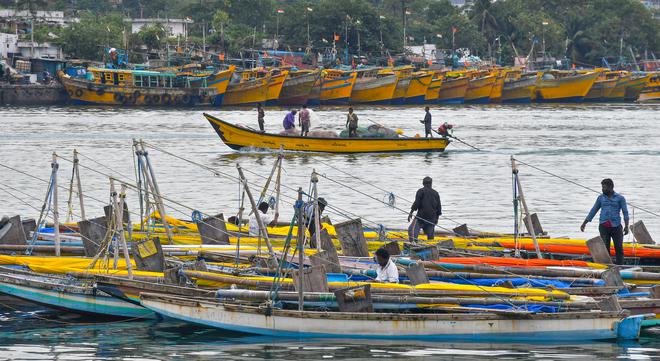
Visakhapatnam Fishing Harbour, the largest fish landing facility in Andhra Pradesh, has sprung back to life after the 61-day annual fishing ban, observed for conservation measures during the breeding season of prawn and other marine species. Around 800 mechanised boats operate from Visakhapatnam coast. The boats, that set out on their first voyage after the ban for a period of three days to two weeks, have returned with a bountiful catch.
On a cloudy Sunday morning, Anandarao Mylipalli, president of export union Fishing Harbour, walks about supervising the catch from the mechanised trawlers. Even though the fishermen have returned with a rich harvest of brown shrimp, he looks worried. “It’s a problem of plenty,” says Anandarao, as he leads a small team of people around the harbour on a walk organised by Visakhapatnam-based organisation East Coast Conservation Team. The walk familiarises people about the diversity of catch, fishing methods and importance of marine conservation.
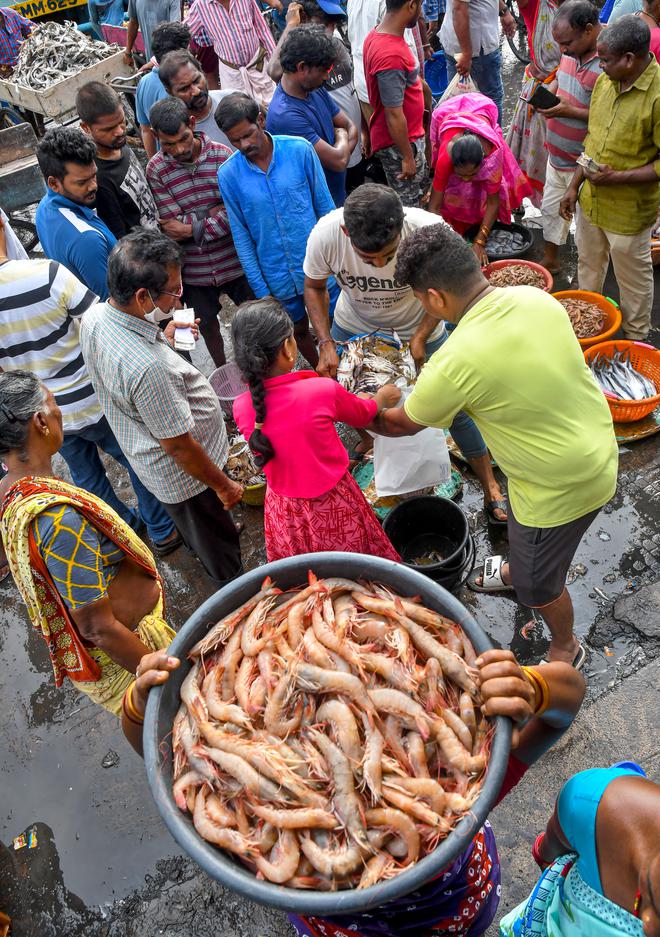
This season, the fishing community is faced with an unusual situation. The first lot of brown prawns, Asian tiger shrimps, three-spot crabs and some blue crabs have arrived in ice-laden crates. “We have seen a record landing of brown prawns, but there are hardly any buyers. As a result, prices have dropped. We don’t know what to do,” rues S Chinna, who works at a seafood firm in the harbour. Each boat has returned with 600 kilograms to more than a ton of brown prawns, which are selling for ₹380 per kilogram in the market. Yet, the fishermen are struggling to find buyers. Till last year, the maximum was 600 kilograms per boat.
The surge in prices of ice and essential supplies have made things more difficult, as operational costs have shot up, preventing many of them from undertaking long voyages, which costs ₹2.5 lakh to ₹10 lakh for the diesel and crew.
Besides brown prawn, the fishermen have returned with a good harvest of three-spot crab, but in small sizes. K Chillakamma strikes a heated argument with a buyer as she attempts to sell a basket of three-dot crabs. Belonging to the Jalaripeta fishing colony, she purchases the crabs and prawns from the auction and sells them to individual buyers at the market. “We are selling a basket (containing nearly 5.5 kilograms) of three-dot crabs for ₹300 which is way less than its normal price. The boats have returned with small sized ones, which doesn’t fetch more. What can we do?” she says curtly, sparing not a second more as she gets back to work.
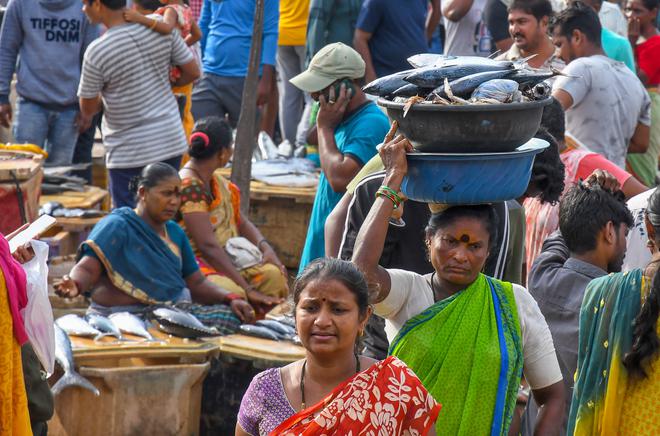
Besides these, the fishermen have returned with miscellaneous fish which include seer fish, varieties of tuna such as frigate, yellow-finned and skipjack. Walking to a section of the harbour, Anandarao shows us a spot-tail shark. “It is a near threatened species. But there are about 10 species of sharks and rays that are protected under the Wild Life Protection Act (WLPA) of 1972. These do not include many species like the spot-tail shark, which are regularly seen at the Fishing Harbour in Visakhapatnam,” says marine biologist Sri Chakra Pranav Tamarapalli, co-founder of Wilded. “Recently endangered species like Hammerhead shark got included in it, which is a good sign,” he adds.
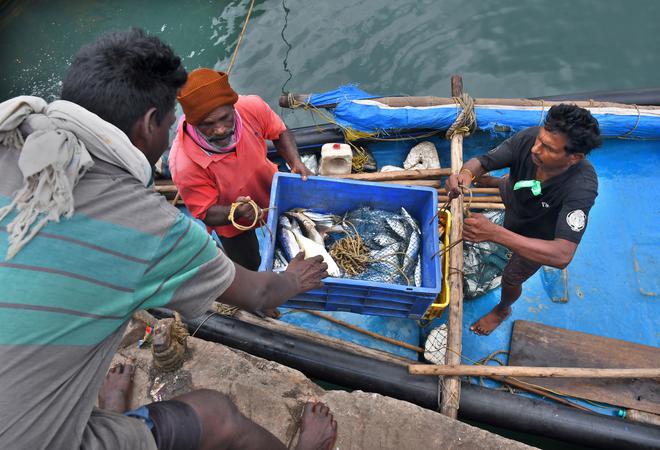
Pranav, who conducts the walks periodically along with local fishermen, stresses on the impact of bottom trawling, one of the most common fishing techniques practiced by the fishermen in Andhra Pradesh. “It is a common fishing practice where large nets are dragged along the sea floor, scrapping the ocean depths. Bottom trawling catches several species at once, the reason why it is preferred by fishermen. But it also impacts marine biodiversity and leads to substantial bycatch, which includes tonnes of small fish mostly dried and sold in the market and to poultries,” he says.
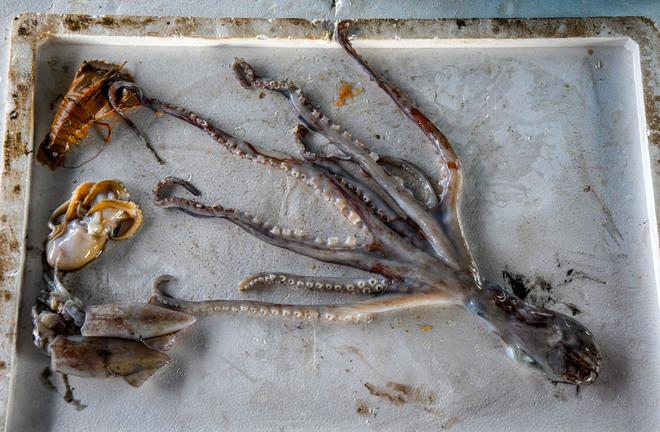
Rows of roofs of mechanised trawlers anchored along the harbour glisten with a carpet of silvery fish, laid out for drying while they return to the coast from deep seas. “There is a good market for dried fish here and atleast 15 varieties are sold. We sell it for ₹200 per share, which is more than a kilogram,” says S Laxmi, who has been selling dried fish for over 30 years. The dried fish market at Visakhapatnam supports over a 100 women in the Visakhapatnam Fishing Harbour. Andhra Pradesh is one of the biggest manufacturers of dried fish in the country along with Tamil Nadu and Gujarat.







